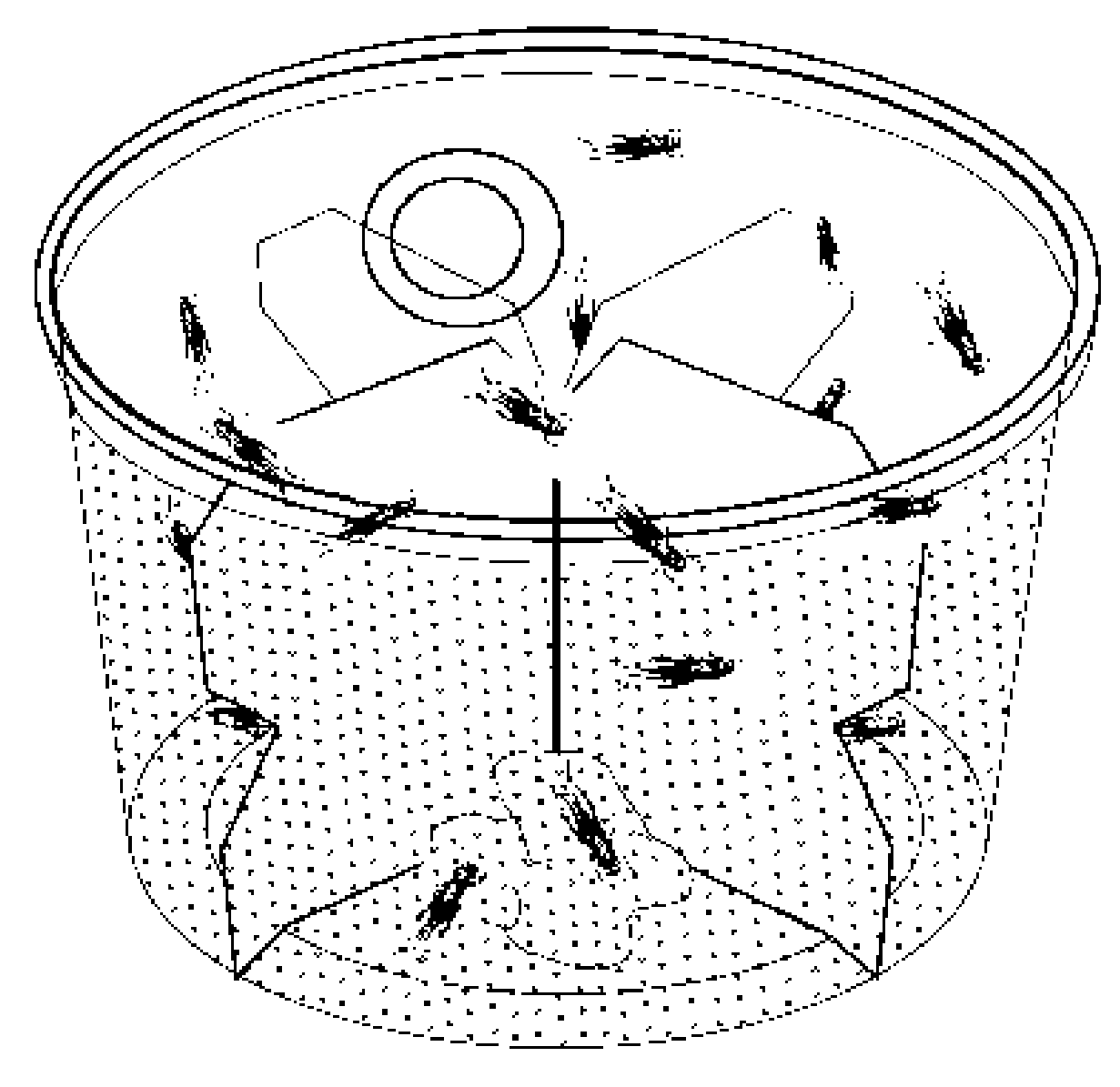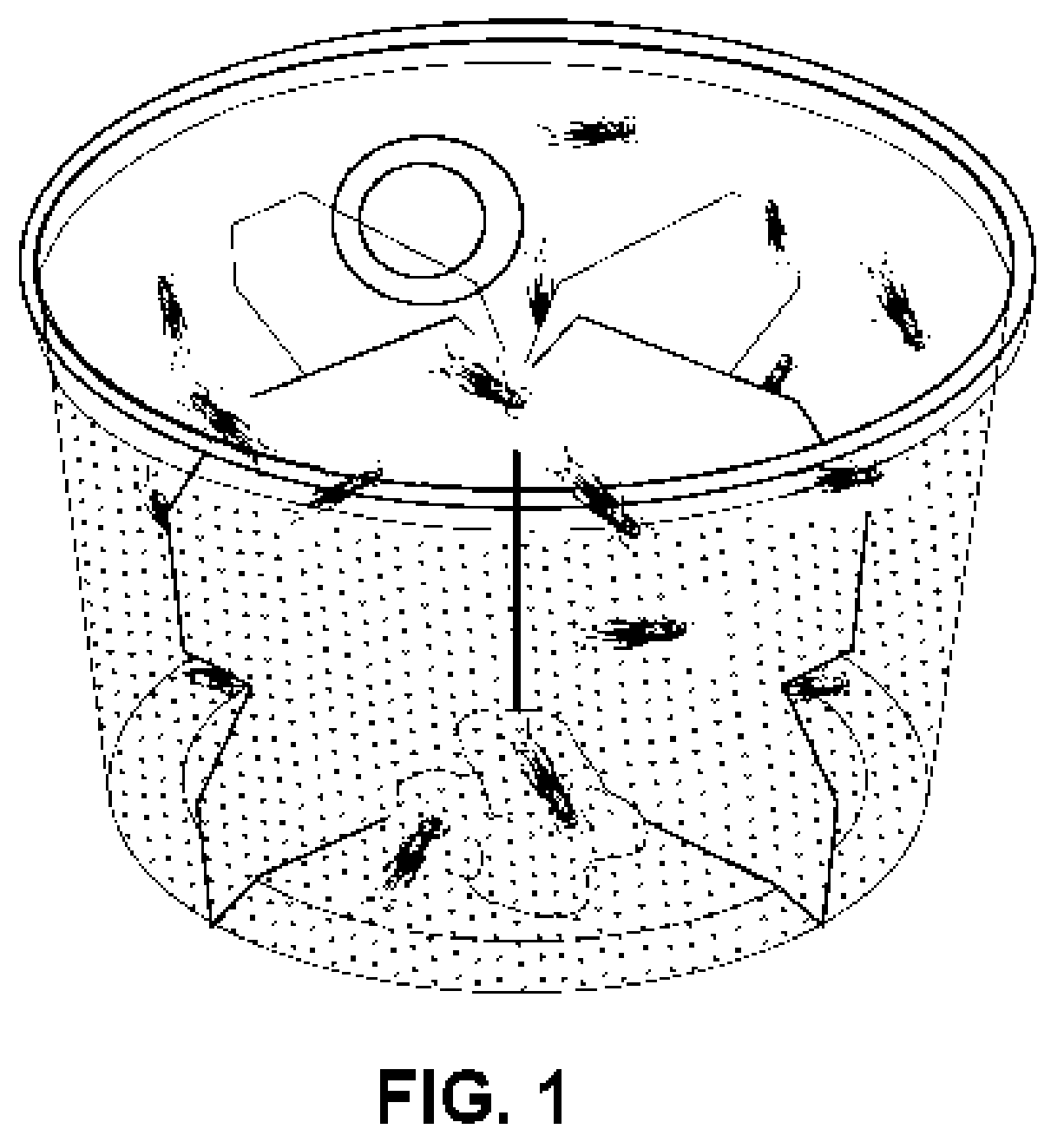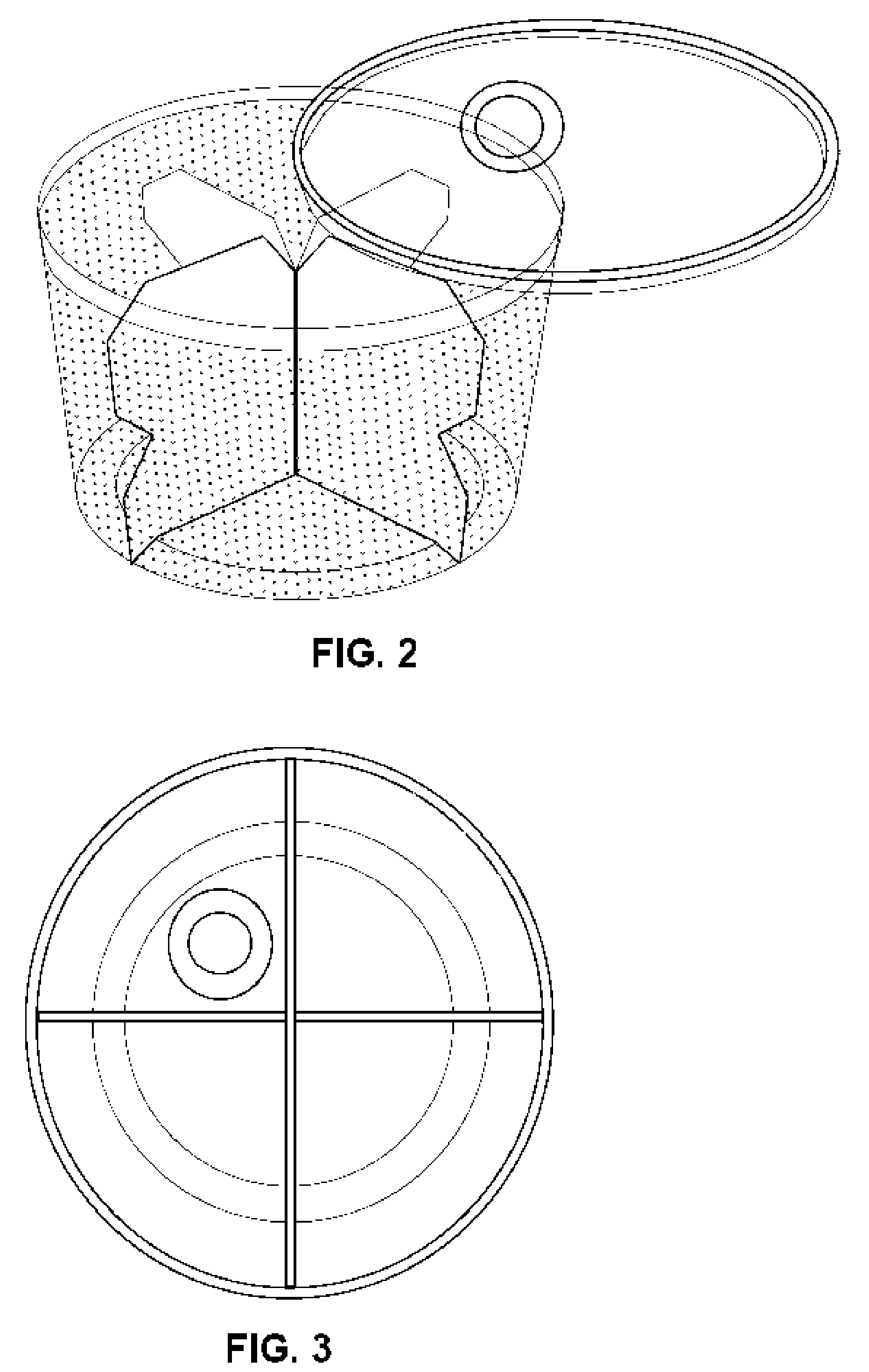Insect container
a technology for insects and containers, applied in the field of insects containers, can solve the problems of high die-off rate of storage methods, inefficient removal of insects in pet stores, and difficult to assess the health of insects, so as to simplify the purchase of insects and assess the health and vitality of insects
- Summary
- Abstract
- Description
- Claims
- Application Information
AI Technical Summary
Benefits of technology
Problems solved by technology
Method used
Image
Examples
Embodiment Construction
[0018] In the claims, the word “comprising” is used in its inclusive sense and does not exclude other elements being present. The indefinite article “a” before a claim feature does not exclude more than one of the feature being present. The phrase “nutritional components” refers to any substance suitable for providing an insect with nourishment for sustaining the insect, such as food and water, and is not limited to any particular kind of food.
[0019]FIG. 1 shows an insect container 10 with a bottom 12, side walls 14, and a top 16. As shown in FIG. 2, the top 16 may be a lid that is removable. The container 10 also has an internal divider 18 that extends between the side walls 14 upwardly from the bottom 12 to form sections 20, as shown in FIG. 3. The internal divider 18 forms a plane along the internal divider 18 from the bottom 12 to the top 14 and has one or more gaps 22 that allow insects 24 to move from one section 20 to another section 20.
[0020] A closable insect removal open...
PUM
 Login to View More
Login to View More Abstract
Description
Claims
Application Information
 Login to View More
Login to View More - R&D
- Intellectual Property
- Life Sciences
- Materials
- Tech Scout
- Unparalleled Data Quality
- Higher Quality Content
- 60% Fewer Hallucinations
Browse by: Latest US Patents, China's latest patents, Technical Efficacy Thesaurus, Application Domain, Technology Topic, Popular Technical Reports.
© 2025 PatSnap. All rights reserved.Legal|Privacy policy|Modern Slavery Act Transparency Statement|Sitemap|About US| Contact US: help@patsnap.com



